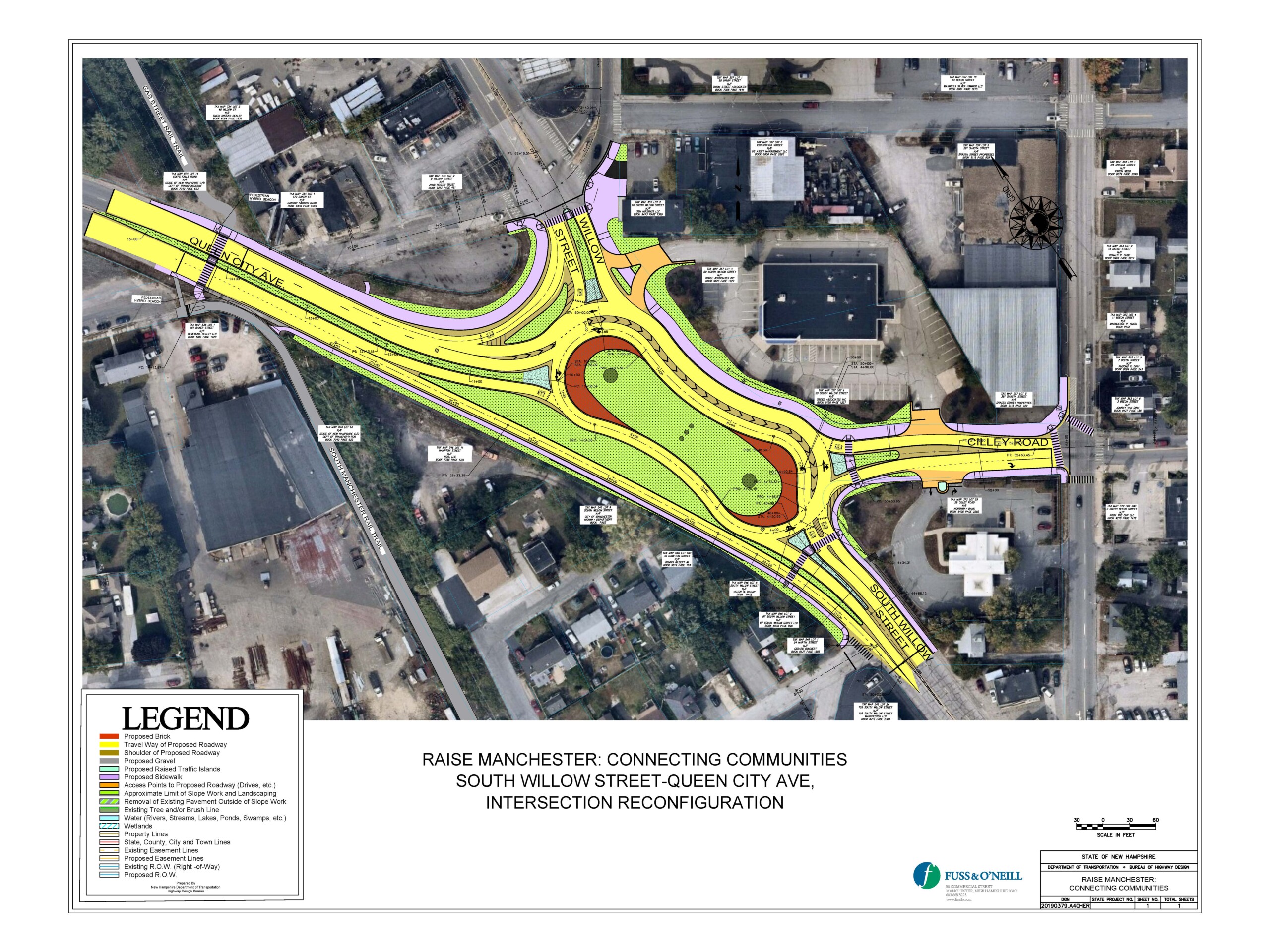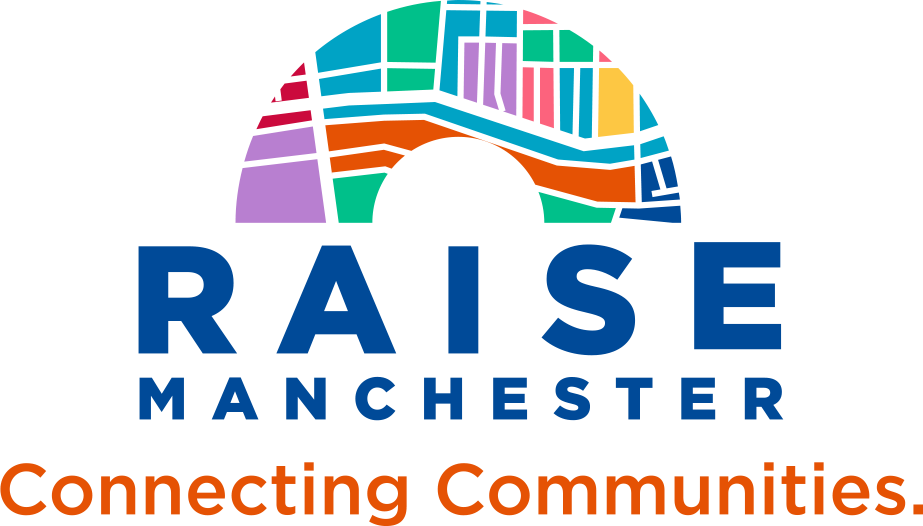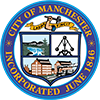

Original post can be viewed here.
A unique-shaped roundabout, dubbed a “peanut,” is being pitched for the intersection of South Willow Street and Queen City Avenue as part of a $30 million Manchester transportation improvement project.
The effort, focused around the South Millyard area to the northern end of South Willow Street, is supposed to “improve connectivity for multiple modes of transportation” and pedestrians, improve commute times, reduce traffic jams near Exit 5 off Interstate 293 and alleviate traffic ahead of performances at the SNHU Arena or baseball games at Delta Dental Stadium.
The bulk of the project will be funded by a $25 million federal Rebuilding American Infrastructure with Sustainability and Equity (RAISE) grant.
The newly proposed reconfiguration announced last week for the South Willow-Queen City Avenue intersection will replace the current intersection, which uses traffic signals.
In response to input from residents, businesses and community groups at a presentation in December, Manchester officials made a number of changes to the intersection design.
“The new peanut roundabout at South Willow Street and Queen City Avenue represents a significant investment in safety and accessibility for pedestrians, cyclists and motorists while making long-term strides to improve our air quality through reduced emissions,” said RAISE Manchester Project Manager Kristen Clarke, PE, PTOE, a traffic engineer with the city’s Department of Public Works.
Officials say the new roundabout’s design, which will use the intersection’s existing infrastructure, will combat the problem of people speeding through the area.
A peanut roundabout behaves like two connected roundabouts, allowing commuters to enter one side or the other at the proper angle, officials say.
Officials say improvements to the design will make it easier for pedestrians and bicyclists to safely use and share the walkways around this intersection and the South Manchester Rail Trail, which crosses over Queen City Avenue.
After officials reviewed community feedback about the 5- to 10-foot-wide sidewalks being too narrow for pedestrians and cyclists to use safely at the same time, the design was changed to include a 12- to 14-foot-wide raised path.
Roundabout features
City officials say the peanut-shaped roundabout will:
- Improve safety by reducing vehicle speeds through the intersection;
- Reduce motor vehicle accidents over time;
- Add crosswalks and roadside walkways, called sidepaths, where no pedestrian crossings or walkways exist;
- Improve freight and vehicle operations by eliminating signal delay;
- Reduce emissions from idling vehicles.
Where the proposed rail trail meets Queen City Avenue and crosses to the proposed South Manchester Rail Trail, a type of signal called a Pedestrian Hybrid Beacon will be installed to allow trail users to cross the roadway safely.
According to a study by the Federal Highway Administration, the beacons reduce pedestrian accidents and have a near-perfect compliance rate, officials said.
Unlike ordinary traffic lights, the beacons — already used elsewhere in the state at rail trail crossings — remain unlit until activated.
Other project pieces
The project has three other major components:
- A new roadway and bridge extending from South Commercial Street behind Delta Dental stadium and over the active railroad to Elm Street;
- A new road extension on the opposite side of Elm Street, where the new bridge terminates at Gas Street, to provide an alternative connection to South Willow Street with a new bridge over the abandoned railroad corridor;
- A new pedestrian bridge over Granite Street connecting Commercial and South Commercial streets.
Earlier this month, officials announced changes to the design of the Granite Street Pedestrian Bridge, based on community input following a December 2022 meeting.
The bridge still will be located just east of the intersection of Commercial and Granite streets. However, the new design features longer, more gently sloping ramps and eliminates sharp turns from the original design.
Based on feedback that the ramps were too narrow, officials widened the ramps and the pedestrian bridge itself from 10 feet to 12 feet.
Cyclists will have the option of using the new bridge or crossing at street level using the travel lanes.
Officials said that in honor of Manchester’s history and at the recommendation of many workshop participants, civic and historical organizations, the pedestrian bridge and its arch structure are designed to resemble the former Notre Dame Bridge, an iconic, green-steel bridge that spanned the Merrimack River, connecting downtown to the West side from 1937 to 1989.
City public works officials have submitted a letter to the Federal Highway Administration stating the new pedestrian bridge will not negatively affect Gateway Park, located at the corner of Commercial and Granite Streets.
“Further, the construction of a pedestrian bridge and ADA-compliant approach ramps will support the use and function of the parcel for public recreation,” the letter stated.
More information about RAISE Manchester: Connecting Communities is available at raisemanchester.org.




